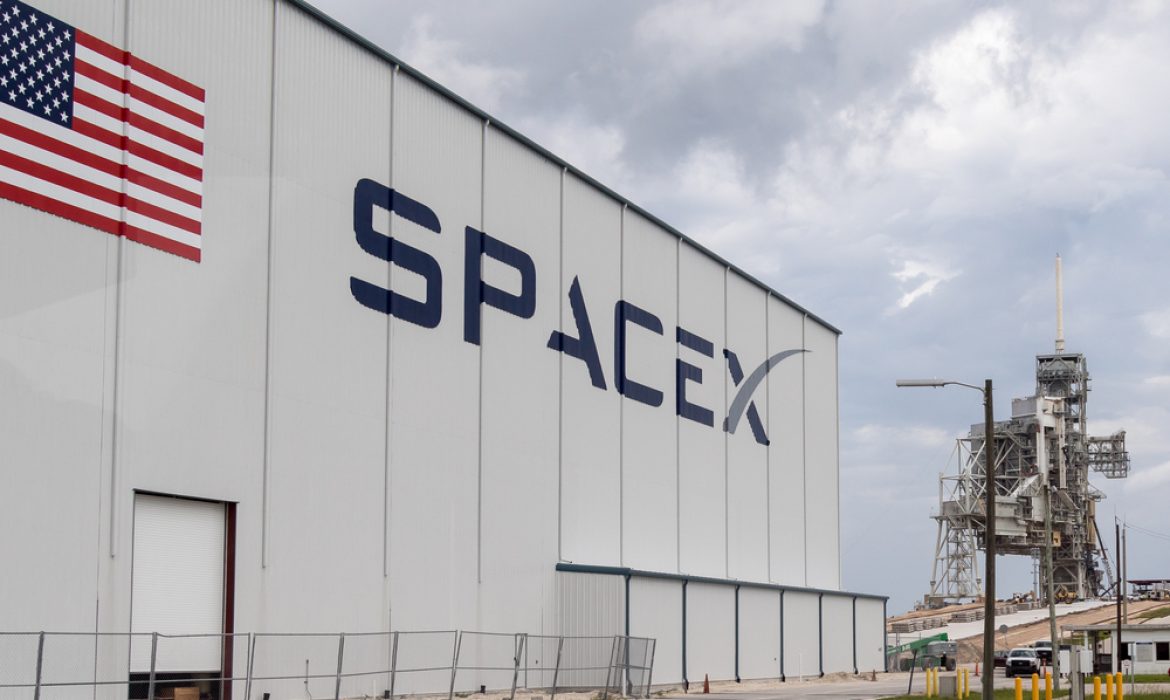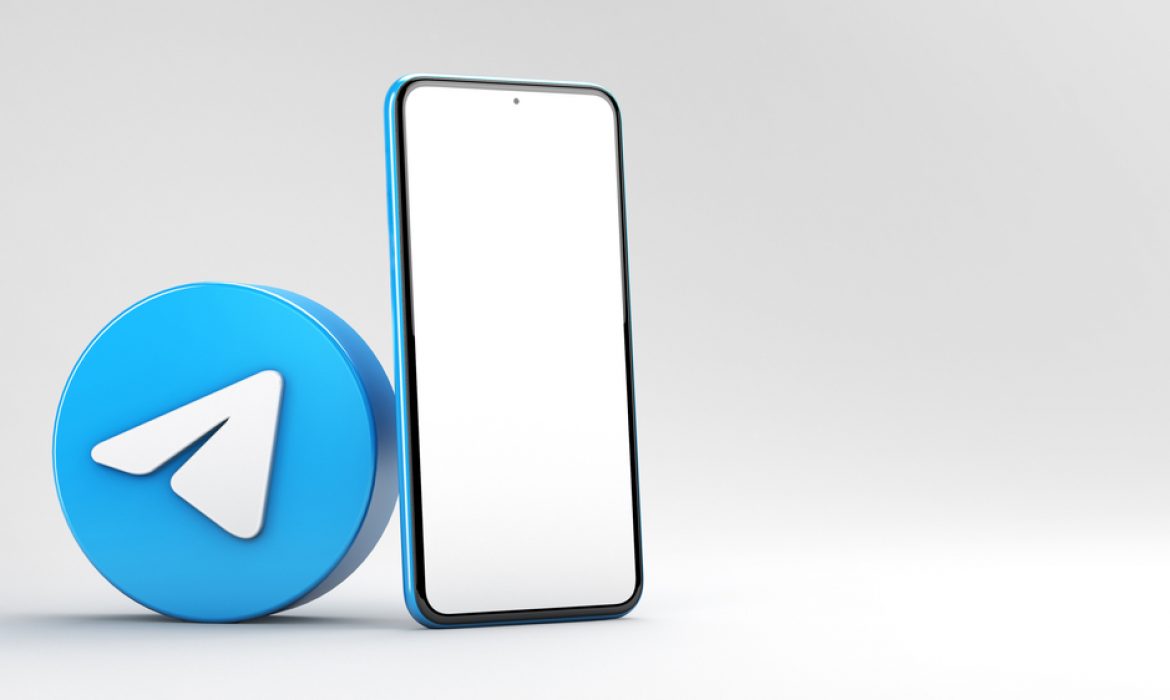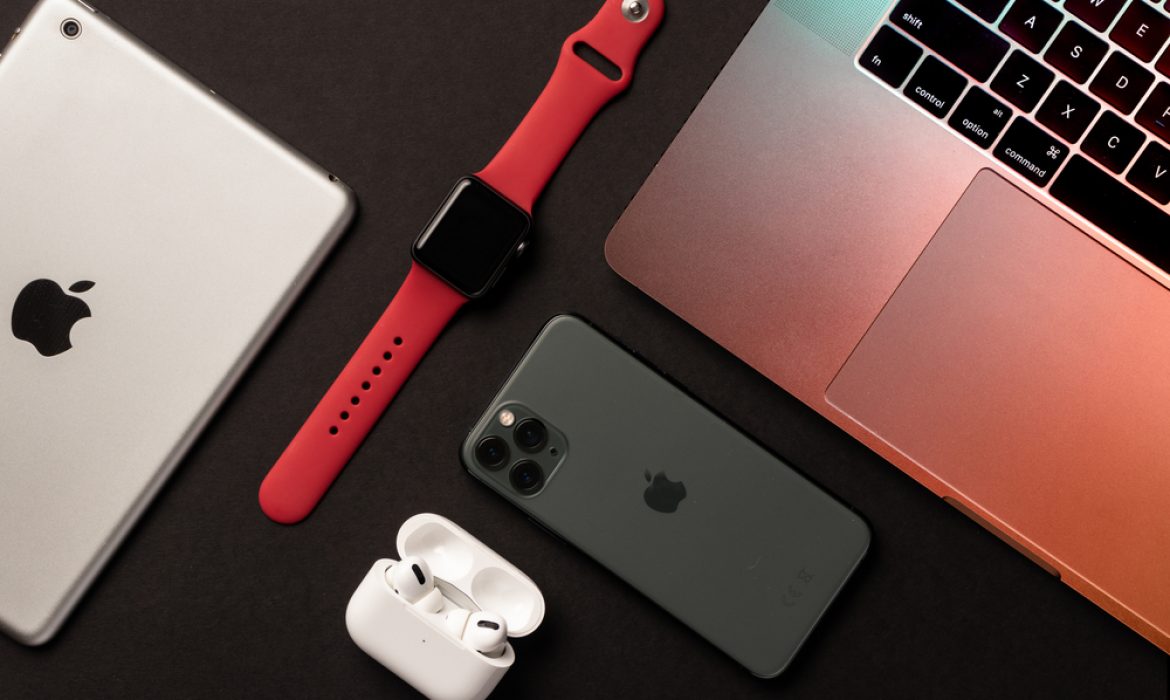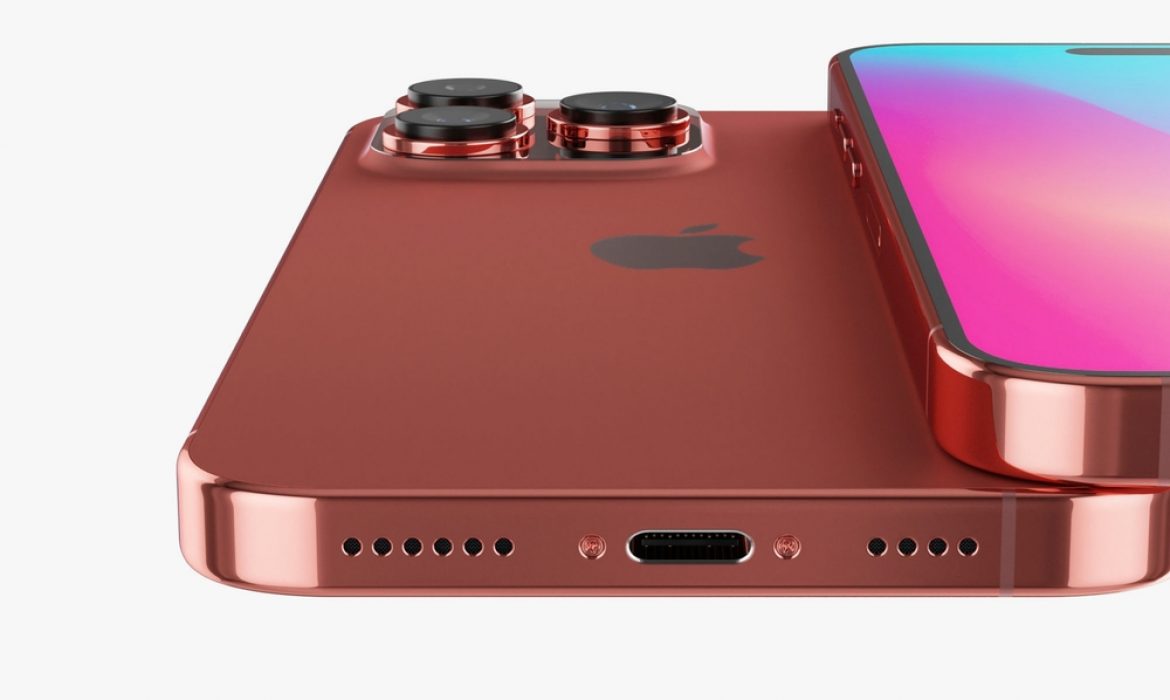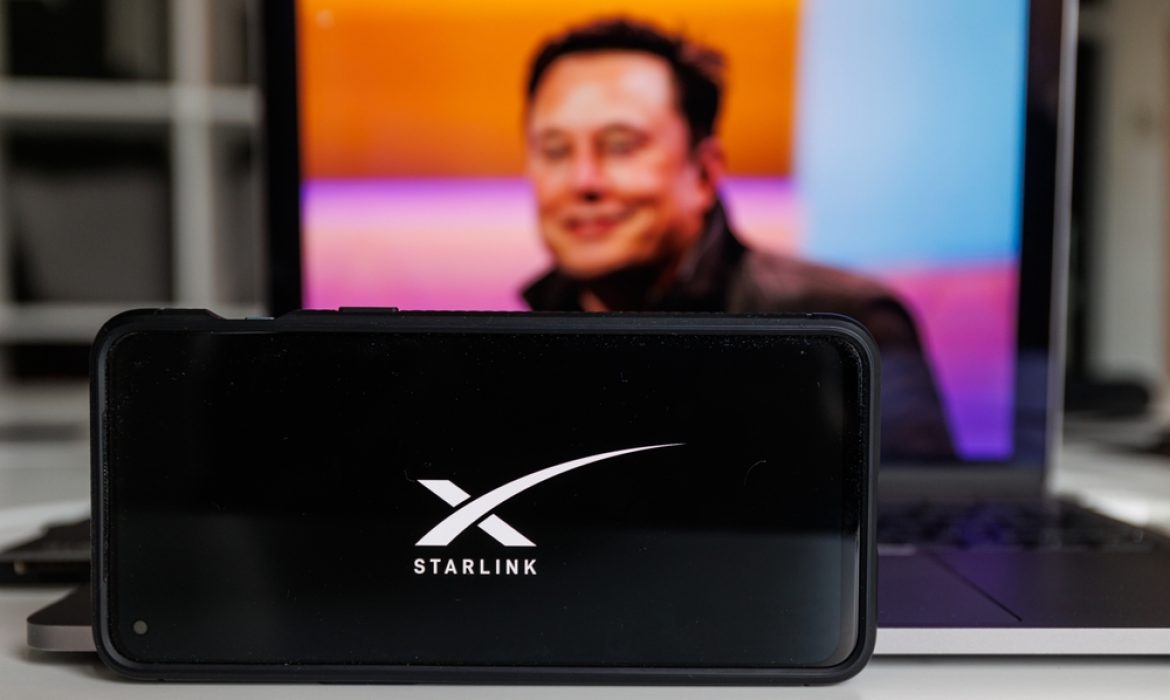Meta and Ray-Ban Unveil Game-Changing Smart Glasses: The Future of Wearable Tech?
In a bold leap forward, Meta and Ray-Ban are reshaping the future of wearable technology with their latest offering: the Meta Ray-Ban Smart Glasses. Shedding the old moniker of ‘Stories,’ these smart glasses are far more than just a fashion statement. Retailing at $299, these glasses are now up for pre-order, set to hit the shelves on October 17.
So, what sets these glasses apart? For starters, they’re not just glasses with a camera; they’re a fusion of advanced audio technology and a high-quality camera experience. On the audio front, these glasses boast a personalized audio system, akin to Amazon’s Echo Frames and Bose Tempo series, promising a musical experience tailored just for you. The new model has a sophisticated microphone setup, featuring five microphones, ensuring crystal-clear calls and voice commands, even in noisy environments.
The camera capabilities are equally impressive. The glasses sport 12-megapixel lenses and can capture stunning 1080p videos. With a storage capacity allowing for 500 photos and 100 30-second videos, these glasses are perfect for capturing life’s moments. Additionally, they introduce seamless live streaming to Facebook or Instagram with just a few taps on the glasses’ stem. A subtle white light indicates recording, ensuring users are aware when they are being filmed.
However, these innovations aren’t without their challenges. Privacy concerns loom large, especially with live streaming capabilities. Meta’s attempt to rekindle interest in smart glasses revolves around presenting them as creative tools. They aim to position these glasses as more than just a gadget, integrating them seamlessly into everyday activities, like cooking or playing musical instruments, while still allowing users to record.
Yet, the primary question remains: Will these glasses find their place in the market? Despite Meta’s previous struggles with user retention, these glasses might have an edge, not just in terms of functionality but also aesthetics. Available in various stylish colors and lens options, including the iconic Wayfarer model and a new round Headliner shape, these glasses are designed to look good.
Powered by Qualcomm’s Snapdragon AR1 Gen 1 processor, these glasses offer a blend of style, function, and technology. With a battery life of 4-6 hours, these glasses are designed to keep up with your active lifestyle. The included case provides an additional eight charges, ensuring you stay connected throughout the day.
Whether ‘audio in glasses’ or ‘camera on your face,’ these smart glasses might just be the start of a new era in wearable tech. Despite the privacy concerns and market challenges, their blend of innovation and style could pave the way for a tech-savvy future where creativity meets convenience, all through a pair of glasses.
SpaceX Launches 21 Starlink Satellites in Early Morning Liftoff
In another milestone for Elon Musk’s SpaceX, the Falcon 9 rocket successfully launched 21 Starlink satellites into orbit from Vandenberg Space Force Base in California. The early morning liftoff took place at 4:48 a.m. EDT (0848 GMT), with SpaceX broadcasting the event via its X (formerly Twitter) account.
What’s particularly remarkable about this launch is the sixth successful takeoff and landing of the Falcon 9 first stage, highlighting the company’s commitment to reusability and cost-efficiency in space travel.
The Starlink project, often dubbed an “Internet megaconstellation,” is SpaceX’s ambitious endeavor to create a global satellite broadband network. As of now, it boasts more than 4,750 active satellites in low Earth orbit (LEO), with plans for further expansion in the future.
This achievement comes hot on the heels of another significant SpaceX feat just days prior when a Starlink rocket took off from Florida’s Space Coast. This marked the 17th flight of the Falcon 9 first stage, breaking the company’s own reusability record set just a week earlier.
The Starlink network is designed to provide high-speed internet access to underserved and remote areas worldwide. As it continues to grow and expand, it promises to bridge the digital divide and revolutionize global internet connectivity.
SpaceX’s ability to consistently launch and recover its rockets represents a crucial step toward making space travel more accessible and cost-effective. The rapid cadence of launches and successful reusability demonstrates the company’s dedication to pushing the boundaries of space exploration.
With each successful mission, SpaceX brings us one step closer to a future where space travel is not only routine but also a fundamental part of our daily lives, offering global internet access, scientific exploration, and commercial opportunities beyond our planet.
OpenAI’s ChatGPT system has gained voice and image recognition capabilities in a major update
OpenAI has unleashed a significant update to its ChatGPT, expanding the capabilities of this viral application in two major ways.
Voice Interaction: First and foremost, ChatGPT now has a voice. Users can choose from five synthetic voices, designed to sound remarkably lifelike, and engage in conversations with the chatbot as if making a phone call. This feature allows users to receive real-time spoken responses to their questions.
Image Recognition: The second major enhancement is ChatGPT’s ability to answer questions about images. While this feature was teased with the introduction of GPT-4, the model powering ChatGPT, it was previously unavailable to the wider public. Users can now upload images to the application and inquire about their content.
Additionally, OpenAI announced that DALL-E 3, the latest iteration of its image-generation model, will be integrated with ChatGPT. This integration will enable users to prompt ChatGPT to generate images.
The introduction of voice capabilities relies on two separate models. Whisper, OpenAI’s existing speech-to-text model, converts spoken language into text, which is then fed into ChatGPT. A new text-to-speech model is used to convert ChatGPT’s responses into spoken words.
The synthetic voices used for ChatGPT were created by training the text-to-speech model on the voices of actors hired by OpenAI. The company focused on ensuring that these voices are pleasant and easy to listen to, with potential plans to allow users to create their own voices in the future.
OpenAI is sharing this text-to-speech model with select companies, including Spotify. Spotify has disclosed its use of the same synthetic voice technology to translate celebrity podcasts into multiple languages, employing synthetic versions of the podcasters’ voices.
These updates underscore OpenAI’s rapid transformation of experimental models into desirable products. In a relatively short time frame, ChatGPT has evolved into ChatGPT Plus, a premium application that combines GPT-4 and DALL-E, rivaling virtual assistants like Siri, Google Assistant, and Alexa. Available for $20 per month, this enhanced app reflects OpenAI’s commitment to making ChatGPT more useful and valuable to users.
The image recognition feature of ChatGPT has already been tested by Be My Eyes, an app designed for people with visual impairments. Users can upload images and ask the chatbot to describe them, offering an alternative to human volunteers.
OpenAI is well aware of the potential risks associated with these updates. Combining models introduces new complexities and challenges. To mitigate misuse, users cannot ask questions about images of private individuals, for instance. OpenAI has been diligently addressing these issues to ensure the updates are safe for public use.
However, challenges remain. Voice recognition could potentially exclude individuals who do not speak with mainstream accents, and synthetic voices carry social and cultural implications that can shape users’ perceptions and expectations.
OpenAI remains confident that it has addressed the most critical issues, but the evolution of ChatGPT and similar AI models will continue to be a complex and evolving process.
Telegram provides a cryptocurrency wallet to 800 million users in a revolutionary move
In a groundbreaking move set to transform the landscape of digital communication and cryptocurrency, Telegram is gearing up to integrate a cryptocurrency wallet based on The Open Network (TON) for its colossal user base of over 800 million active users. This revolutionary wallet, aptly named TON Space, is slated to be globally accessible through Telegram settings starting November 2023.
This integration represents a significant leap for Telegram, which is already at the forefront of secure and private messaging services. TON Space will not only enhance the user experience but also usher in a new era of digital ownership and financial accessibility.
TON Space: A Game-Changing Wallet
TON Space is no ordinary cryptocurrency wallet; it’s set to become the foundational infrastructure of the entire TON ecosystem. Telegram’s decision to launch this feature speaks volumes about its commitment to enhancing user empowerment and financial freedom.
What makes TON Space even more compelling is Telegram’s promise to give priority access to TON projects and partners on its global advertising platform, Telegram Ads. This strategic move is a testament to Telegram’s dedication to promoting and fostering Web3 and Web2 partnerships on an unprecedented scale.
The Ideals Behind Telegram’s Move
At its core, Telegram has always championed the cause of freedom of speech and user autonomy. With TON Space, Telegram takes these principles to the next level by providing users with a powerful tool to manage their digital identity and assets seamlessly.
John Hyman, Telegram’s Chief Investment Officer, eloquently encapsulates the essence of this monumental partnership, stating that it places digital ownership squarely in the hands of Telegram’s vast user base. Simultaneously, TON projects will offer the necessary tools to engage with audiences, marking a monumental milestone in the fusion of Web3 and Web2 technologies.
This move not only showcases Telegram’s commitment to its user base but also reflects its ambition to create a more inclusive and empowering digital future. As the launch date draws near, the crypto community eagerly anticipates the transformative impact of TON Space and its implications for the world of digital communication and finance.
iOS 17: The Next Evolution in iPhone Innovation
Apple, always at the forefront of innovation, unveiled its highly-anticipated iOS 17 at this year’s Worldwide Developers Conference. This major update brings a slew of exciting features and improvements to iPhone users worldwide. While the launch of the Vision Pro mixed reality headset garnered much attention, iOS 17 is poised to redefine the iPhone experience.
USB-C Charging: The End of an Era
One of the most significant changes in iOS 17 is the shift from Apple’s proprietary Lightning charging cable to USB-C for the new iPhone 15 models. This change marks the end of an 11-year history with the Lightning cable, signaling a move towards a more universal charging standard.
Live Voicemail and Enhanced FaceTime
iOS 17 introduces Live Voicemail, a feature that transcribes a caller’s message in real-time. This empowers users to decide whether to take a call or let it go to voicemail while the caller is still leaving their message. Additionally, unknown numbers can be sent directly to voicemail if the “Silence Unknown Callers” setting is enabled.
FaceTime receives a facelift as well, allowing users to leave video messages if the recipient doesn’t answer a video call. Expressiveness is taken up a notch with new features like heart reactions, balloons, fireworks, and more, adding fun and creativity to your video conversations.
“Hey Siri” Becomes Simply “Siri”
In a bid to make interactions with Siri feel more natural, iOS 17 drops the “Hey” from the activation phrase. Now, you can simply say “Siri” to get your assistant’s attention. Siri also gets better at handling follow-up requests after activation, streamlining interactions.
NameDrop and Contact Poster: Simplifying Connections
iOS 17 introduces NameDrop, a feature that makes sharing contact information a breeze. Users can bring their iPhones close together, akin to AirDrop, to exchange contact details with newfound acquaintances. The Contact Poster update allows you to set a custom image as your caller ID photo, offering a more personalized calling experience.
Enhanced Autocorrect: No More “Ducking” Around
Autocorrect receives a comprehensive overhaul with iOS 17. Apple incorporates a cutting-edge machine learning language model, improving text input support and offering sentence-level autocorrection. Predictive in-line text recommendations make typing smoother, letting you add entire words or sentences with a simple tap of the spacebar. The keyboard becomes smarter over time, learning your typing habits and even adapting to intentionally typed words like “duck.”
StandBy Mode, Journal App, and More
iOS 17 introduces StandBy, a full-screen mode that displays information from a distance when your iPhone is charging on its side. This feature allows personalization with clocks, favorite photos, or frequently used widgets.
Additionally, the Journal app offers a digital space for users to capture thoughts, notes, and ideas seamlessly.
In conclusion, iOS 17 ushers in a new era of iPhone capabilities and user experiences. From enhanced voice assistants to simplified contact sharing and improved autocorrect, Apple continues to push the boundaries of what’s possible in mobile technology. iOS 17 promises to make your iPhone more intuitive, expressive, and personalized than ever before.
The US Recorded Music Industry Thrives: H1 2023 Insights
In the dynamic world of music, the numbers often sing their own tune. The Recording Industry Association of America (RIAA) recently released its Mid-Year 2023 Report, and the figures are like a chart-topping hit. In the first six months of 2023, the US recorded music industry orchestrated an impressive $8.4 billion in gross revenues.
This headline-worthy statistic, representing money spent on streaming subscriptions, physical and digital music, signifies a thriving industry. Year on year, recorded music revenues in the US on a retail basis surged by 9.3%, illustrating the music’s undying allure.
Digging deeper into the financial score, on a wholesale basis, which reflects the money that ultimately reaches record labels, distributors, and artists, the industry generated a substantial $5.3 billion in H1 2023. Compared to the previous year, this marks an 8.3% increase.
The report’s full details are available here, but let’s harmonize these numbers: streaming played a leading role in this crescendo of revenues. Services encompassing paid subscriptions, ad-supported platforms, digital and customized radio, social media, and digital fitness apps contributed significantly to this financial symphony. Notably, streaming revenues soared by 10.3% year on year, swelling to a whopping $7 billion in H1 2023, accounting for 84% of the total recorded music earnings in the US.
It’s essential to note that the pace of growth in music streaming accelerated compared to the previous year, with total streaming revenues escalating by $600 million YoY, a testament to the enduring popularity of streamed music.
Peering further into the streaming realm, revenues from paid subscription services stole the spotlight, ascending by 11% YoY to $5.5 billion in H1 2023. This category encompasses both full-premium and ‘limited-tier’ subscriptions. These subscriptions held sway over nearly two-thirds of the industry’s total earnings and over three-quarters of total streaming revenues.
However, within the realm of streaming, there’s a tale of two subcategories. While revenues from subscription-based streaming flourished, ad-supported music streaming services experienced more muted growth, with a modest 0.6% YoY increase, amassing $870 million in H1. The message is clear: consumers increasingly prefer premium, ad-free listening experiences.
Delving into subscription numbers, the report reveals that although the number of paid subscriptions to on-demand music services grew in H1 2023, the pace of growth was more relaxed than in previous years. During the first six months of the year, an average of 95.8 million subscriptions was recorded, marking a 5.8 million YoY increase compared to 90 million in H1 2022. Notably, this figure excludes ‘limited-tier’ services, counting multi-user plans as a single subscription.
Analyzing this trend over the years reveals a deceleration in growth, suggesting that the US might be approaching a saturation point for streaming subscriptions, given its status as the world’s largest recorded music market.
This development emphasizes the importance of recurring price increases, a strategy championed by various industry leaders, as slowing subscription growth may become the norm.
It’s not all digital, though. Physical music formats, including vinyl LPs and CDs, recorded revenues of $882 million in H1 2023, marking a 5% YoY increase. Within this segment, vinyl records, a beloved format for audiophiles, notched up 1% YoY growth, reaching $632.4 million, representing 72% of physical format revenues. However, it’s noteworthy that despite the modest revenue increase, fewer vinyl records were sold in H1 2023 compared to H1 2022, suggesting that vinyl prices may be on the rise.
RIAA’s Chairman & CEO, Mitch Glazier, summed up the report’s findings eloquently: “This report describes a thriving, growing music ecosystem that continues to reach new heights and shape our culture. And it reflects the creative human genius and hard work of all the artists, songwriters, labels, publishers, and services who make the music happen and meet fans and audiences where they are in today’s forward-looking and innovative music community.”
In a rapidly evolving industry, these numbers are not just figures; they are the heartbeat of an ever-evolving musical landscape.
Global Oil Markets Face Supply Shortfall: IEA Warns of Price Volatility
IEA Warns of Oil Price Volatility as Saudi Arabia and Russia Extend Production Cuts
In a recent announcement, the International Energy Agency (IEA) has issued a stark warning that the current production cuts implemented by oil giants Saudi Arabia and Russia could trigger a significant supply shortfall, leading to renewed turbulence in oil prices. This alert comes at a time when global oil markets are already grappling with complex dynamics and mounting pressures.
Deficit Looms Over Global Oil Markets
The IEA’s report projects a substantial oil supply deficit of approximately 1.2 million barrels per day for the second half of 2023. This forecast is a direct consequence of the recent decision by the OPEC+ alliance to extend their production cuts until the end of this year. While this deficit is somewhat smaller than previously anticipated, due to historical shifts in demand patterns, it remains a cause for concern, especially for consumers worldwide.
Depleted Inventories and Vulnerable Prices
Even in the scenario where Saudi Arabia and Russia decide to ease their production curbs in early 2024, the IEA warns that global oil inventories will be severely depleted. This depletion of reserves leaves oil prices vulnerable to sudden and unpredictable shocks, potentially leading to increased price volatility. Recent developments have already seen Brent futures surge to a 10-month high, crossing the $92 per barrel mark.
Tightening Market Dynamics
“The market is really tightening in the second half of the year,” notes Toril Bosoni, the head of the IEA’s oil market division. August data revealed a substantial drop of 75 million barrels in global oil inventories, highlighting the growing imbalance in supply and demand.
OPEC+ Data Indicates Significant Shortfall
While OPEC+ member countries often justify their production cuts as necessary for market stability, their own data suggests a more significant supply shortfall in the coming quarter, estimated at over 3 million barrels per day. This is the most substantial shortfall seen in at least a decade, yet the OPEC+ coalition has provided limited insight into the reasoning behind their current strategy.
Potential Political Ramifications
This situation could potentially hold political implications, particularly for President Joe Biden, who is preparing for a reelection campaign amid concerns over high inflation and soaring gasoline prices, hovering close to $4 a gallon. The IEA is also keeping a watchful eye on the impact of elevated oil prices on the global economy and the pace of monetary easing.
Challenges to the Status Quo
The IEA’s report takes a more direct and explicit stance on the Saudi-Russia partnership than in the past, focusing on the energy disruption and inflationary pressures stemming from Moscow’s conflict in Ukraine. The IEA characterizes the Saudi-Russian alliance as a “formidable challenge” for oil markets, with the extension of production cuts likely leading to a substantial market deficit through the fourth quarter of the year.
A Transition Away from Fossil Fuels
This ongoing tension between the IEA and oil-producing nations reflects broader shifts in the energy landscape. IEA Executive Director Fatih Birol recently suggested that global oil demand may reach its peak in this decade as consumers increasingly turn to renewable energy sources to combat climate change. This transition marks what could be the beginning of the end for the fossil fuel era.
Global Demand and Economic Impacts
Despite these transformations, the IEA continues to estimate that global oil consumption reached a record high in June, with projections indicating an annual high of 101.8 million barrels per day this year, representing an increase of 2.2 million barrels per day. Notably, China is expected to drive 75% of this growth.
However, this growth is anticipated to taper off in 2024, aligning with weaker global economic expansion and a reduced reliance on oil as a primary transport fuel. The IEA’s outlook underscores the complex web of factors at play in the global energy landscape, where geopolitics, climate considerations, and economic realities intersect, leaving both producers and consumers to navigate a challenging and evolving terrain.
Apple’s MagSafe Returns in iPhone 15: The Future of Wireless Charging
In a much-anticipated event known as “Wonderlust,” Apple took the tech world by storm with the unveiling of its latest innovations, including the iPhone 15, iPhone 15 Plus, and the Apple Watch Series 9. These new devices come packed with exciting features and improvements that are sure to delight Apple enthusiasts worldwide.
iPhone 15 Series: Abandoning the Past
One of the most significant and groundbreaking changes in the iPhone 15 series is the abandonment of Apple’s proprietary Lightning interface in favor of the universally accepted USB-C connector. This shift means that a single cable can now be used to charge not only iPhones but also laptops, tablets, other smartphones, and even Apple headphones. This move towards standardization is expected to make life more convenient for Apple users.
The iPhone 15 series also marks the end of the “notch” era, replacing it with the Dynamic Island feature, previously exclusive to Pro models. Dynamic Island offers a fresh way to view notifications and interact with applications, enhancing the user experience.
Revolutionary Camera Upgrades
Apple has not spared any effort in enhancing the camera capabilities of the iPhone 15 series. The primary camera now boasts an impressive 48-megapixel sensor, a significant upgrade from the 12-megapixel module found in the iPhone 14. In low-light conditions, four neighboring pixels are cleverly combined into one large pixel, resulting in 12-megapixel photos that retain exceptional clarity.
Portrait mode, which is now automatically activated, offers more control over focus adjustments even after a photo is taken, allowing users to fine-tune the image according to their preferences. Night mode, Live Photos, and Action mode have all undergone improvements, making the iPhone 15 series a photography powerhouse.
Selfie enthusiasts will also be thrilled with the introduction of autofocus and portrait lighting for the front camera.
Stunning Display and Performance
The iPhone 15 features an OLED Super Retina display with support for Dolby Vision and a dazzling 1600 nits of brightness. The display’s peak brightness soars to an astonishing 2000 nits when in bright sunlight, double that of the iPhone 14. Available in 6.1 and 6.7-inch diagonal sizes, these displays promise immersive and vibrant visuals.
Under the hood, the iPhone 15 series is powered by the A16 BIONIC chip, the same chip featured in last year’s iPhone 14 Pro models. Apple is confident that this chip will provide ample processing power to meet the demands of users.
Battery life receives a boost, with Apple claiming that the iPhone 15 “will last a whole day without charging” thanks to an enlarged battery capacity. Moreover, a second-generation ultra-wideband chip enhances connectivity with other devices and significantly improves the accuracy of Find My searches.
Additional Features and Pricing
The iPhone 15 series incorporates MagSafe support, a satellite communication system for emergencies when outside cellular range, and a noise reduction system for voice calls. Users can choose from a variety of colors, including pink, yellow, green, blue, and black.
The iPhone 15 is priced at $799 for the 128GB version, while the iPhone 15 Plus model with the same memory configuration is available for $899, maintaining the same price point as the previous generation.
Apple Watch Series 9: Precision Redefined
Apple Watch enthusiasts also had reasons to celebrate, with the announcement of the Apple Watch Series 9. This latest iteration boasts a new S9 processor that is not only 30% faster but also more energy-efficient, ensuring a full day of use on a single charge. Detectors have been upgraded, promising 45% more accuracy.
One standout feature is the introduction of the “Double tap” gesture, allowing users to answer calls or perform other actions with a simple double-tap of the thumb and index finger. This intuitive gesture is especially handy in situations where screen interaction is less practical.
Apple Watch Series 9 comes in a range of colors, and for every purchase of a steel case, Apple contributes to charitable causes. Additionally, Apple is doubling down on its commitment to environmental sustainability, with the smartwatch being the first 100% clean product.
The Apple Watch Series 9 can be ordered immediately, with prices starting at $399 or $499 for the cellular version. The official release date is set for September 22.
In conclusion, Apple’s latest unveilings have once again pushed the boundaries of innovation, setting the stage for enhanced user experiences across the iPhone and Apple Watch product lines. These devices not only deliver on performance and features but also align with Apple’s commitment to environmental sustainability, making them a compelling choice for tech enthusiasts worldwide.
SpaceX Launches Its 5000th Starlink Satellite: A Glimpse into the Future of Global Connectivity
In yet another groundbreaking achievement, SpaceX soared into the skies on August 27, deploying its 5000th Starlink communications satellite into the boundless expanse of low-Earth orbit. With this milestone, SpaceX continues to reshape our world, quite literally, by creating an extensive network of satellites that promises to revolutionize global connectivity.
The awe-inspiring event unfolded as a Falcon 9 rocket, adorned with the 22 new Starlink satellites, roared to life at 03:05 Kiev time from the iconic SLC-40 spaceport at Cape Canaveral. Following a well-practiced routine, just two and a half minutes post-launch, the rocket’s first stage gracefully detached. In a breathtaking display of precision, on the ninth minute after liftoff, it gently alighted upon the floating platform known as “Just Read the Instructions” stationed in the vastness of the Atlantic Ocean. This particular journey marked the third outing for this remarkable launch vehicle, having previously carried ESA’s Euclid mission, Ax-2, and now, the esteemed Starlink mission.
It’s important to note that this incredible feat was sandwiched between other remarkable SpaceX missions, including Crew-7, which had recently ferried four astronauts to the International Space Station. SpaceX’s relentless launch schedule reflects the company’s unwavering commitment to advancing space exploration on multiple fronts.
SpaceX’s Starlink program represents a transformative leap in satellite technology. The company presently holds the green light to deploy a staggering 12,000 Starlink satellites in low-Earth orbit. What’s even more staggering is that SpaceX awaits the go-ahead to launch an additional 30,000 satellites. This figure amounts to more than half of all satellite launch applications submitted to the International Telecommunications Union in the foreseeable future.
Since its official debut in 2021, the Starlink service has made remarkable strides in its global reach. It now casts its digital net over more than 50 countries and territories worldwide, spanning the United States, Japan, large swathes of Europe, portions of Latin America, select regions in Africa (including Nigeria, Mozambique, and Rwanda), and even the icy expanses of Antarctica.
SpaceX’s revolutionary Starlink satellite internet service currently serves over 1.5 million subscribers worldwide. An impressive 42,000 terminals are actively in use within Ukraine alone, serving an array of critical purposes including military applications, healthcare institutions, businesses, and humanitarian organizations. The ability to connect remote and underserved regions to the global digital grid is a testament to the transformative power of space technology.
As SpaceX continues to push the boundaries of innovation and connectivity, each Starlink satellite launched brings us one step closer to a more interconnected, accessible, and digitally empowered world. The deployment of thousands of these small, agile satellites into orbit represents a leap forward in global communication infrastructure and hints at a future where internet access knows no bounds, reaching the farthest corners of the Earth and beyond.
Meta Aims to Reach New AI Heights with GPT-4 Competitor
In a bold stride towards enhancing its AI capabilities, Meta, the parent company of Facebook, is gearing up to train a new language model that aspires to rival the prowess of OpenAI’s GPT-4. This strategic move, recently disclosed by The Wall Street Journal, underscores Meta’s commitment to advancing AI and its vision for the future of AI-powered interactions.
The company’s blueprint involves a significant investment in AI training chips and the establishment of robust data centers tailored for the development of a cutting-edge chatbot. The ultimate goal is to craft an AI language model with a level of sophistication akin to GPT-4. Meta intends to kick off the training process for this new model in early 2024.
What makes this endeavor even more intriguing is Meta’s ambition to offer this advanced AI tool free of charge to companies engaged in the development of AI-driven solutions. This gesture reflects Meta’s drive to democratize AI and make high-level language models more accessible for innovative AI applications across various industries.
To facilitate this ambitious project, Meta is ramping up its acquisition of Nvidia H100 chips, specialized for AI training tasks. Furthermore, the company is intensifying efforts to enhance its AI infrastructure, aiming to reduce its reliance on external cloud platforms, such as Microsoft’s Azure. This shift towards self-reliance signifies Meta’s determination to gain greater autonomy and control over its AI development endeavors.
Meta’s pursuit of an AI model on par with GPT-4 is a logical extension of its ongoing exploration of generative AI features. Reports from earlier this year hinted at Meta’s experimentation with a chatbot for Instagram, featuring an impressive array of 30 personas. This aligns with the company’s rumored plans to introduce AI “personas” designed to replicate human expressions. Such developments could potentially revolutionize how users engage with AI-powered interfaces and digital companions.
However, the path to AI excellence is not without its hurdles. Meta is reportedly grappling with turnover among its AI research teams due to resource allocation challenges arising from multiple language model projects. Additionally, the company faces formidable competition in the arena of generative AI. OpenAI’s declaration that it has no immediate plans to train GPT-5 has left room for others to catch up. Apple, for instance, is pouring substantial resources into its AI model “Ajax,” asserting its superiority even over GPT-4. Tech giants like Google and Microsoft are rapidly integrating AI into their productivity tools, with Google eyeing the application of generative AI in Google Assistant. Amazon, too, is actively exploring generative AI for potential chatbot applications with Alexa.
As Meta sets its sights on reaching the GPT-4 benchmark, the broader AI landscape continues to evolve at a breakneck pace. Meta’s commitment to pushing the boundaries of AI not only promises innovations in digital interactions but also reinforces the competitive dynamics in the AI industry. How this quest for AI supremacy unfolds will undoubtedly shape the future of AI-driven technologies and human-computer interactions.

